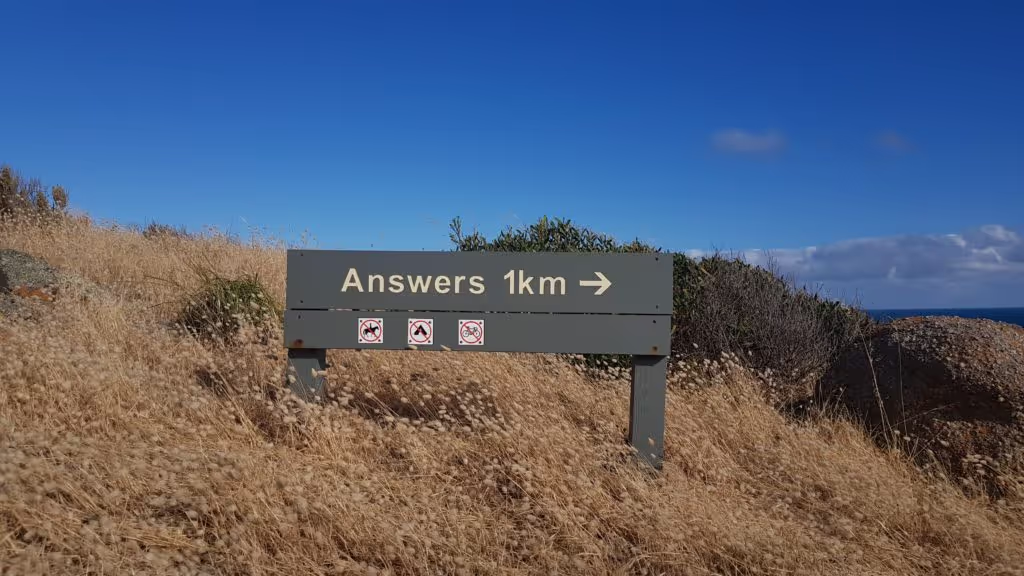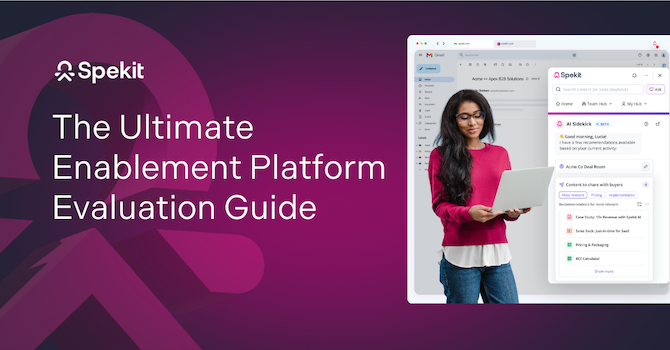According to the Harvard Business Review , companies with structured, documented and monitored sales processes have high-performing sales teams and achieve 30-percent more revenue than companies that do not. If you’re working on your own , don’t let skeptical sales reps tell you they don’t need a sales process to hit their number, as learning continues long after onboarding ends.
No matter how long your company has been in business, it’s never too early - or too late - to create a defined, measurable sales process. It’s a great way to capture sales tactics that work for your top performing sellers and help underperforming or to succeed.
There are many B2B sales methodologies in the market to help you learn some best practices, but you’ll still want to define your own since your organization’s sales process will be unique to your business. You can borrow selling strategies or tactics from sales thought leaders, competitors, or partners, but remember there are no cookie-cutter sales processes that are one-size-fits-all. Instead, you'll want to customize your approach that takes your team's strengths, and weaknesses, into account.
Here are five steps to create a tailored sales process for your business, regardless of what you sell.

1. Discover the Whys - Your Customers, Your Reps, and Yours
Whether you are a founder, a direct sales executive or even a channel sales manager, it’s important to follow Simon Sinek’s advice and . Why did you start your business? Why do you manufacture, distribute, deliver or sell the products and services you do?
Once you figure out why you started your business or why you chose to lead or enable the sales team where you work, you’ll be on your way to understanding your company’s unique value proposition statement to around.

2. Survey Your Customers and Prospects
Some of the most effective ways to develop or improve your sales process is to ask your customers why they chose you. Did they feel your sales reps took the time to understand their needs and priorities? Did they feel your company had the skills and expertise to complete your project better than your competitors? With active listening, you’ll have more insight into how to create a winning sales strategy.
Take this feedback into consideration when developing your sales process and have your sales team sell to the strengths your customers recognize. This is also an excellent group to use for testimonials or case studies.
You should also talk to prospects that didn’t buy from you to identify gaps in your existing sales approach. Your sales rep may not have been empathetic enough to the prospect’s pain points or a competitor may have a more cohesive win strategy than your team did. Or, your rep may not have effectively asked for the client’s business, and the prospect contracted with someone who did.
If you’re not already performing debriefs after winning (or losing) sizable deals, you’ll want to conduct a win/loss analysis. Be sure to leverage this data to build your sales processes based on your past success and failure. Clozd.com says that only about 20% of B2B companies they surveyed investigate and capture why they won or lost a deal. And sadly, those businesses make incorrect assumptions 60% of the time.

3. Don’t Hide Your Sales Process on PowerPoint
Have you ever been to a sales kickoff meeting where a new strategy is presented on a slide deck and your reps gets excited about adopting a new sales process? Did they forget what they learned a week later? Capture that presentation on video and within the applications themselves. Imagine how much easier it would be to learn how to use new features in Salesforce, only to have it available as you’re using the app itself.
A recorded video presentation with the original audio can be edited down into digestible microlearning topics and stored in context to related information such as:
- Lead and opportunity qualification criteria
- Your company’s sales cycles and how a deal should progress through them
- How to close a deal and ask for the business
- Objection acknowledgement and handling
- Tips from proven methodologies like consultative, account-based or SPIN selling
Going through all the work to create a step-by-step sales process or playbook, then storing it in a static PowerPoint on a file-sharing app is simply a waste of everyone’s time and talents. Keep it current and available at their fingertips for the benefit of your entire team.
4. Create a Customizable Script or Playbook Cheat Sheet
Sales professionals beyond the first couple of years into their career are generally less than enthusiastic about scripted sales calls. Try providing some compelling icebreaker statements for capturing attention on cold calls to encourage your reps to keep things fresh. This not only keeps customers’ attention but enables your sales team to stay engaged and motivated.
Sales managers can help craft qualifying questions that determine whether a prospect is a viable opportunity or just kicking tires. Create your sales process steps in a flow-chart format that enables the salesperson to decide how to react to prospect behavior. Don’t be afraid to draw upon your senior sales reps who have a consistent record of exceeding quota and customer expectations, as they make excellent extensions of the management team and can contribute to:
- Business development call scripting
- Playbook development
- Deal-closing walkthroughs
Find ways to compensate your top-performing sellers for any significant time they invest in sharing their knowledge. Playbooks filled with insight around your typical buyer personas, common objections, ideal customer personas and content for each stage of the sales funnel will be some of the most valuable sales enablement resources they can help you develop. Investing in a customizable sales playbook software can streamline this process, making it easier to document, share, and update sales strategies in real-time. As mentioned earlier, by capturing and sharing these “pearls of wisdom” directly within your CRM and messaging apps, you’ll foster better team-building and collaboration opportunities that drive revenue and quota attainment.

5. Create a Living, Malleable, Iterative Sales Process
A simple Slack channel can be a great place to gather feedback about the good, the bad and the ugly situations related to implementing your sales process steps “in the wild.” Agile sales teams allow for failure and empower their reps to modify their approach and try again.
Your organization , as does the competitive marketplace, so your sales strategy should be designed and maintained to change along with it. Alerting your team as modifications are made to your process can be difficult if you expect reps to rely on email or slower communications systems. Instead, give them instantaneous notifications regardless of the apps they use through a digital enablement platform like şÚÁĎłÔąĎÍř.

Ready to Develop Your Own Sales Process Steps?
Whether your business is a recent startup or a well-established brand, it’s never too late to create a fresh sales strategy that enables you to communicate your unique selling proposition. Established businesses looking to formalize and fine-tune their selling process should leverage win-loss analytics and other valuable data in their CRM platform. And, don’t forget: encourage your best sellers to share their wisdom with their colleagues from within your and content.
If your sales reps need help qualifying sales leads or closing deals, it might be time to reevaluate your sales strategy. today to learn how şÚÁĎłÔąĎÍř’s digital enablement platform can drive digital adoption and accelerate your sales enablement efforts.







